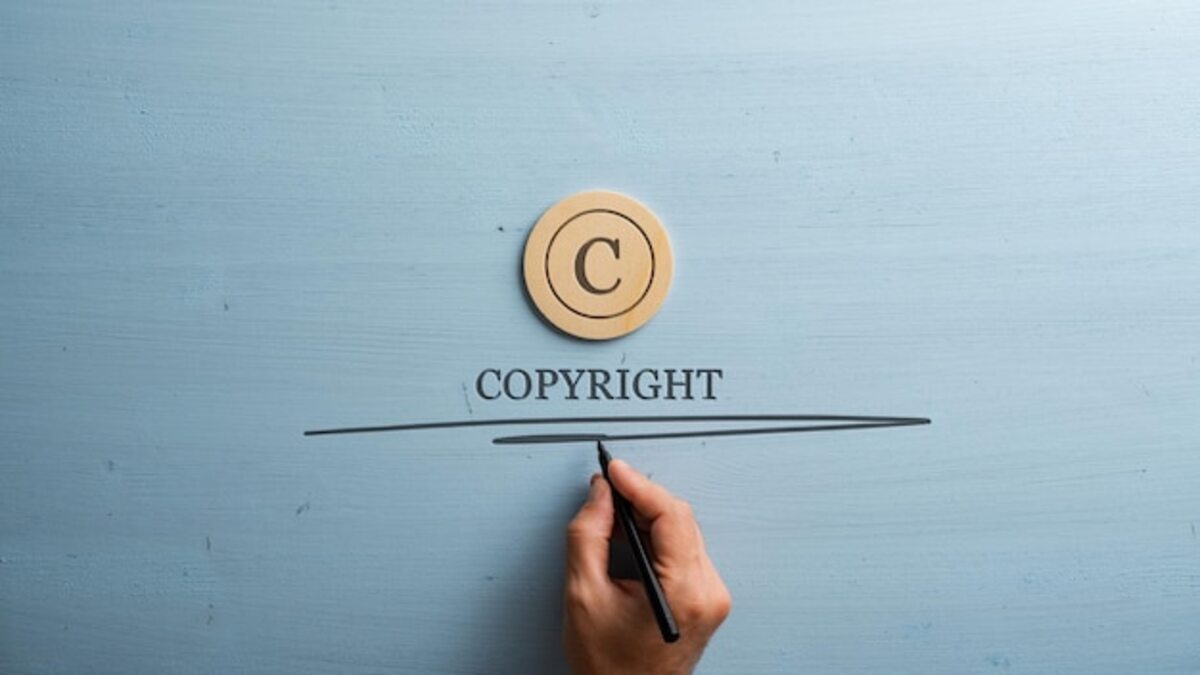The influence of writing on copyright and intellectual property

Writing is much more than a simple communication tool; it is a powerful medium that shapes our ideas and protects our rights. In today's world, understanding the influence of writing on copyright and intellectual property is essential for any creator. This article will explore how careful crafting of texts can ensure not only the recognition of your work but also its legal protection. Discover how every word matters in the complex legal framework that governs our creativity.
The importance of copyright in writing
The importance of copyright in writing lies in its ability to protect the originality and creativity of works. When creating a text, whether it is a novel, an essay, or even an informative article, the author has the right to decide how their work is used and distributed. Copyright ensures that creators can benefit financially from their efforts and have control over how their work is presented to the public. Without this protection, anyone could appropriate others' ideas, distorting the original message and harming those who have dedicated time and effort to developing their content.
Additionally, understanding copyright fosters a culture of respect for creative work. When writers are aware of their rights, they not only protect their own creations but also contribute to an environment where intellectual effort is valued. This is particularly relevant in a digital age where the ease of copying and sharing information can lead to unintentional infringements. By educating authors about their rights and responsibilities, we promote a more ethical artistic community committed to intellectual honesty, ensuring that every written word receives the recognition and protection it deserves.
2. How to register your literary works: steps and benefits
Registering your literary works is a fundamental step to safeguard your rights as an author. The process usually begins with the gathering of all materials related to your work, whether it's a manuscript, notes, or previous versions. Next, you must choose the appropriate organization to carry out the registration; in many countries, this is done through copyright offices or similar entities. Providing detailed information about your work, as well as a copy of the complete text or representative parts, is essential to complete the registration. This formal act not only gives you tangible proof that you are the original creator, but it also establishes a date and legal context that can be crucial in the event of future disputes.
The benefits of registering your literary works are numerous and significant. Firstly, having an official registration provides you with greater protection against possible infringements, allowing you to take legal action if someone uses your work without authorization. Additionally, having a registration can facilitate the obtaining of licenses or publishing contracts, as it demonstrates professionalism and commitment to protecting your creation. Finally, the act of registering your work can be a psychological boost; knowing that you have protected your ideas allows you to focus on creating more without the constant worry of possible plagiarism. In summary, registering your works is not only a defensive measure but also an investment in your future as a writer.
3. Intellectual property: what does it cover and what does it not?
Intellectual property refers to a set of rights that protect creations of the mind, such as literary, artistic, and scientific works. In the realm of writing, this includes not only books and articles but also scripts, essays, and any form of original textual content. Copyright is a fundamental part of this intellectual property, as it grants the creator the exclusive right to reproduce, distribute, and display their work. However, it is important to understand that not all ideas or concepts are protected; what is protected is the original expressions of those ideas. This means that two authors can write about the same topic without infringing on each other's rights as long as their approaches are sufficiently distinct. On the other hand, there are aspects that intellectual property does not cover. For example, ideas themselves, methods, or systems cannot be patented simply for being expressed in a text. Additionally, fair use is a legal doctrine that allows certain limited uses of protected works without needing to obtain permission from the author, such as criticism or teaching. It is crucial for writers to know these distinctions in order to properly manage their works and protect themselves from potential infringements. By understanding what intellectual property covers and what it does not in the context of writing, creators can make more informed decisions about how to share their work while safeguarding their creative rights.
4. Differences between moral and economic rights
Moral and economic rights are two fundamental pillars in the field of copyright, and it is crucial to understand their differences to adequately protect a work. Moral rights refer to the personal connection of the author with their creation; they include aspects such as the right to be recognized as the creator of the work and to oppose any modification that may harm their honor or reputation. These rights are inalienable and irrevocable, meaning that regardless of commercial transactions concerning the work, the author will always maintain a moral bond with it. On the other hand, economic rights are related to the economic aspect of the works. They allow the author to commercially exploit their creation, whether through sales, licenses, or reproductions. Unlike moral rights, these can be transferred or sold to third parties. This distinction is essential for creators who seek to protect not only their artistic integrity but also to obtain economic benefits from their work. Understanding these differences allows authors to make informed decisions about how to manage and protect their works within the appropriate legal framework.
5. Plagiarism: definition, consequences, and prevention
Plagiarism is defined as the improper appropriation of another author's ideas, words, or expressions, presenting them as one's own. This act is not only an ethical violation but also infringes copyright laws and can lead to serious legal consequences for the infringer. In an environment where originality and authenticity are valued, plagiarism undermines trust in creators and their work. The repercussions can range from academic sanctions to legal actions, highlighting the importance of understanding what constitutes plagiarism and how to avoid it. To prevent plagiarism, it is essential for writers to adopt appropriate practices from the beginning of the creative process. This includes giving credit to the sources used, utilizing correct citations, and developing a unique voice that reflects their ideas and perspectives. Additionally, becoming familiar with plagiarism detection tools can be a valuable resource to ensure that the created content is original and complies with legal regulations. By fostering a culture of respect for intellectual property, creators not only protect their own rights but also contribute to a healthier and fairer creative ecosystem for all.
6. Creative Commons licenses: share without losing rights
Creative Commons licenses have revolutionized the way creators can share their work, allowing for greater flexibility in distributing and using content without giving up their copyright. These licenses offer different levels of protection and enable authors to decide how they want their work to be used. For example, a creator may allow others to remix or use their work for commercial purposes, as long as proper attribution is given. In this way, Creative Commons licenses provide a balance between the desire to share and the need to protect originality.
By opting for a Creative Commons license, authors not only expand the reach of their work but also contribute to the cultural and educational enrichment of society. This practice fosters a creative ecosystem in which ideas circulate freely and build upon existing works, thereby driving innovation. However, it is crucial for creators to understand the legal implications of each type of license to ensure that their rights are respected while enjoying the benefits of collaborative exchange. In this regard, choosing the right license can be as important as the act of writing itself.
7. Landmark cases on copyright violations
The landmark cases regarding copyright violations provide a clear insight into the importance of protecting our writing and, therefore, our ideas. One of the most well-known examples is the case of "Oracle vs. Google," where it was debated whether Google had infringed copyright by using parts of Java code in its Android platform. This case not only tested the legality of using protected works in innovative environments but also highlighted the complexities that arise when technology and creativity collide, emphasizing the urgent need to understand how the legal system operates concerning intellectual property. Another significant example is the famous conflict between singer Pharrell Williams and the family of the late Marvin Gaye, following the success of the song "Blurred Lines." The court ruled that Williams had plagiarized fundamental elements of a classic song, which sparked a debate about creative boundaries and originality in music. This case underscores how artistic influences can lead to legal confusion and highlights the responsibility creators have to respect prior works while developing their own artistic expressions. Thus, these emblematic litigations serve as reminders of the crucial relevance of respecting copyright in all creative fields.
8. How to protect your writings in the digital realm
To protect your writings in the digital realm, it is essential to adopt a series of measures that safeguard your work against possible infringements. One of the most effective strategies is the use of online registration tools that allow you to document the date and content of your creations. Platforms like Creative Commons offer licenses that specify how your work can be used, thus providing clarity for both you and those who wish to make use of it. Additionally, maintaining an organized archive with original copies and previous versions can be invaluable if you ever need to demonstrate authorship or make adjustments to your work.
Another key technique to safeguard your writings is the implementation of watermarks or metadata in digital documents. These practices add an additional layer of protection and can deter others from using your content without permission. Likewise, sharing your works only on secure platforms with clearly established rights will allow you to have greater control over their dissemination. It is also advisable to stay informed about the current legal framework regarding copyright in your country, as this will better equip you to face any eventuality related to the unauthorized appropriation of your writings. Ultimately, being proactive in protecting your works not only ensures the recognition you deserve but also promotes a fairer creative environment for all authors.
9. The future of intellectual property in the digital age
In the digital age, the landscape of intellectual property is constantly evolving. The proliferation of platforms and technologies that enable the creation and distribution of content has blurred the traditional boundaries of what constitutes an original work. Writers and innovators must navigate an environment where copying and redistribution are facilitated, and where works can be easily manipulated or reinterpreted. This shift poses significant challenges for copyright protection, as creators must be mindful not only of their own works but also of how they interact with content generated by others, demanding a deeper understanding of the rights associated with their writing.
Moreover, digitization has led to the emergence of new ways to protect and share creative work. Open licenses, such as Creative Commons, allow authors to set specific conditions under which their content can be used by others, thus promoting a culture of collaboration and mutual respect among creators. However, this approach also raises questions about the balance between public access to creativity and the need to ensure fair compensation for authors. The future of intellectual property will largely depend on how we manage to adapt to these changes without losing the fundamental value of individual work; it is a challenge that requires both innovation and an unwavering commitment to the ethical principles that govern our creative capacity.



